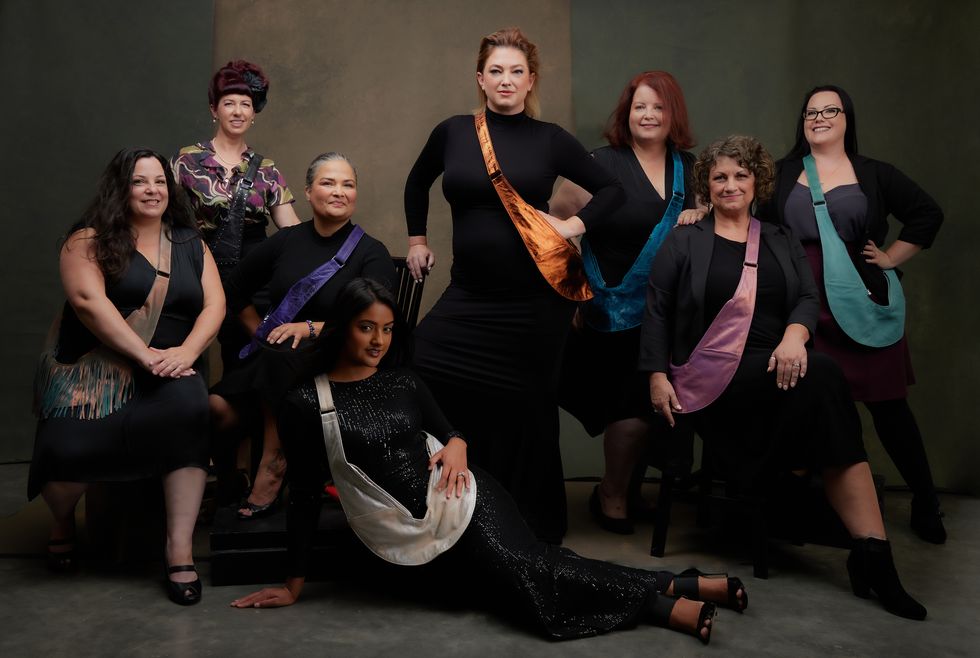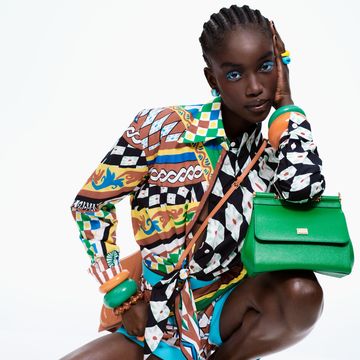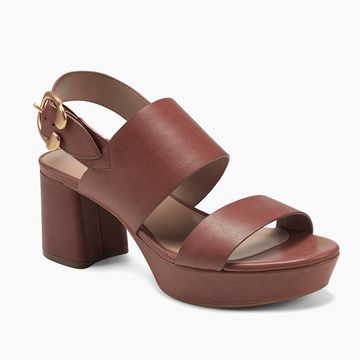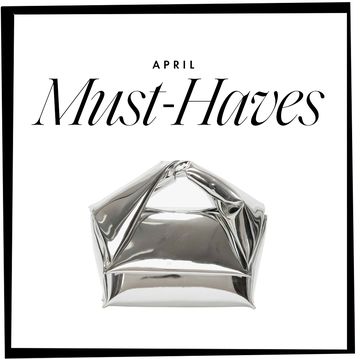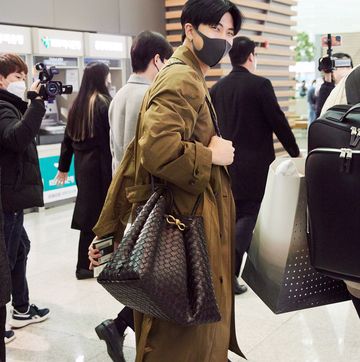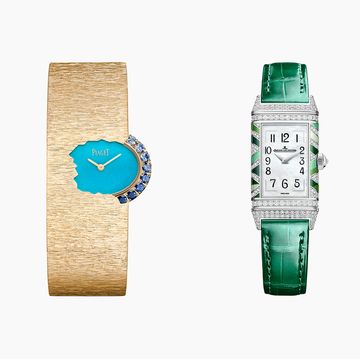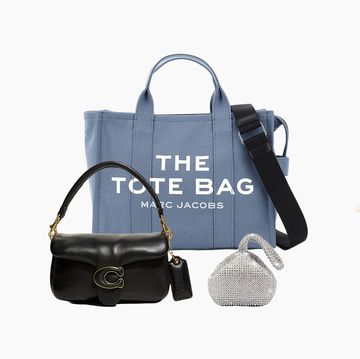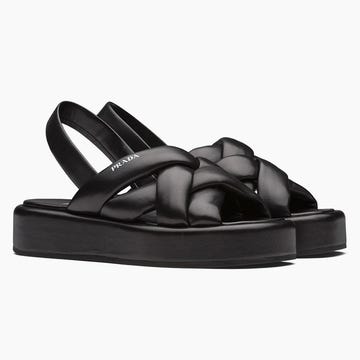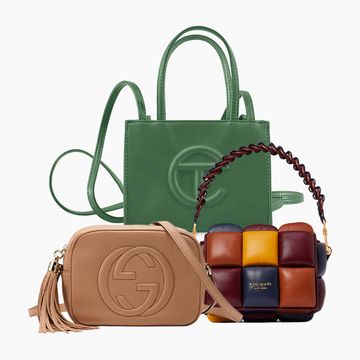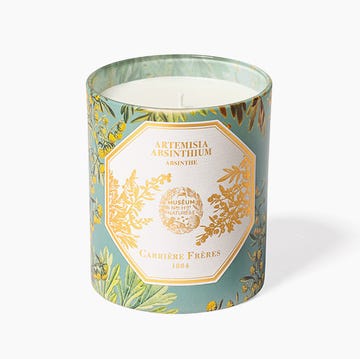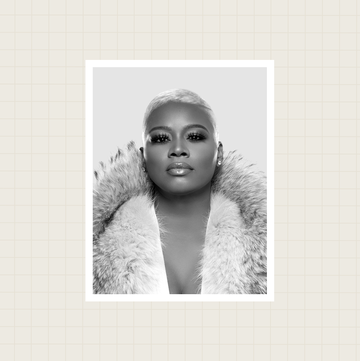The design was born in Legoland. Perhaps not a spot known for inspiring women's fashion, the Southern California amusement park was nevertheless where Nichole MacDonald found herself fumbling with the handbag she'd tried (and failed) to build a business from. It was too bulky for rides, too cavernous for small necessities, and her son was impatiently pulling on her sleeve as she tried to balance the purse's heft against her shoulder. Cue a mental meltdown, and the thought occurred: Wouldn't it be lovely if she had more pockets? Just, like, endless pockets? Pockets for everything. A good old-fashioned Batman's utility belt for the on-the-go woman?
She went home and, with the help of a friend handy with a sewing machine, designed the first prototype for what is now the Sash Bag, a popular utilitarian crossbody purse that bridges the gap between a satchel and a belt. Outfitted with a total of 10 pockets spread out evenly along the length of the bag, there's little-to-no heft. The purse evokes the breezy style of a nomad: It looks just as natural on the shoulder of Geena Davis as it does on a cosplayer pretending to be Jack Sparrow.
MacDonald officially launched Sash Bags in 2012, and since then the company has generated over $14 million in revenue and built a community of devoted fans. Most of the bags, which come in a variety of shades and styles—fringe, no-fringe, snakeskin, marbled—are made from genuine leather, a silky lambskin sourced from India that's sturdy but lightweight. Prices hover in the $150-190 range for the leather Sash, with “junior” bags designed for youth available as low as $50.
For MacDonald, the bag's popularity within a particular demographic of women–those in “the third stage of life,” past college and/or child-bearing and ready for what's next—is a testament to her own attraction to reinvention. Sash Bags was launched in the aftermath of her first company's failure; the second venture could have spelled catastrophe.
“When I launched my first company, I really was focused on the wrong things,” she says. “I was really focused on wanting to make it look really good and to make myself look professional. Because I grew up on welfare. Nobody ever taught me to manage money; I was never encouraged to start a business or to even get a job. I was encouraged to become a mom. I had no idea what I was doing. And I crashed, and pretty hard—that business took me down with it.” So when the Legoland crisis prompted her to sit down with another bag prototype, she almost didn't feel confident enough to finish her design.
“What I did different the second time is, I didn't worry about how things looked or what people thought. It was more about really being authentic and vulnerable,” she says.
The idea was to make the Sash Bag more about function than form. It would be a purse you were never really meant to take off—it hugs the body whether you're in the car, on a flight, or, well, in the restroom. The hybrid satchel's a completely hands-free transportation device for the many products a woman is, for better or worse, expected to have on-hand. There are pockets for passports, lip gloss, keys, phones, hand sanitizer, Airpods, feminine hygiene products, cash, cards, snacks, and sunglasses, but because of the spread-out style, MacDonald says customers often forget they're even wearing the bag. And such “liberation”—that's the word MacDonald uses—has turned the Sash Bag fandom into a genuine community, ripe with Facebook meet-ups and live video sales popular enough that MacDonald hosts them once a week, every week.
Today, Hoda and Kathy Lee are fans. Brian Smith of UGG Australia is a shareholder. RHOBH star Garcelle Beauvais has a Sash. In an accessories market that's expected to grow alongside women's increased percentage of the U.S. workforce, the Sash bag's success is a clear indication that fashion needs not be frilly to build a following.
Lauren Puckett-Pope is a staff culture writer at ELLE, where she primarily covers film, television and books. She was previously an associate editor at ELLE.

